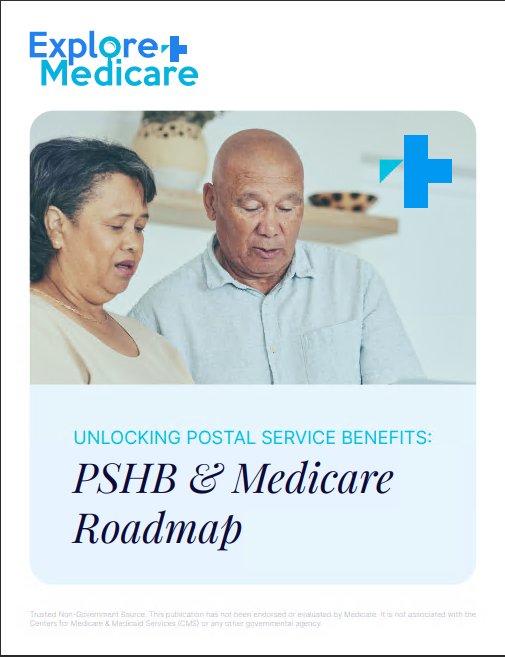Key Takeaways
-
Planning for Medicare costs is crucial to safeguarding your retirement savings from unexpected expenses.
-
Understanding Medicare’s components and anticipating out-of-pocket costs can help you create a solid financial plan.
Why Medicare Costs Deserve Your Attention
Medicare is an essential part of your retirement plan, but it’s not free. Many retirees underestimate the total cost of healthcare, assuming that Medicare will cover everything. While it’s a robust program, Medicare has premiums, deductibles, and coinsurance that can add up quickly. Taking the time to understand these expenses now can save you financial headaches later.
Even routine medical visits and medications can lead to significant expenses over time. If you’re not proactive about understanding these costs, they can eat into your retirement savings faster than expected. Medicare’s various parts each serve a unique purpose, but they also bring their own financial obligations. Knowing where you stand and what to anticipate puts you in a better position to stay financially secure.
Breaking Down Medicare Costs
Medicare is divided into parts, each with its own cost structure. Let’s look at what you can expect in 2025:
Medicare Part A (Hospital Insurance)
-
Premiums: Most people don’t pay premiums if they’ve worked and paid Medicare taxes for at least 10 years. If not, premiums can be as high as $518 per month.
-
Deductible: The inpatient hospital deductible is $1,676 per benefit period.
-
Coinsurance: Costs increase with longer hospital stays, starting at $0 for the first 60 days, then $419 per day for days 61-90, and $838 per day for lifetime reserve days. Beyond lifetime reserve days, you’ll bear all hospital costs out-of-pocket.
Medicare Part B (Medical Insurance)
-
Premium: The standard monthly premium is $185 in 2025. Higher-income beneficiaries pay more.
-
Deductible: An annual deductible of $257 applies.
-
Coinsurance: After meeting your deductible, you’ll pay 20% of the Medicare-approved amount for most services. Keep in mind that some services, like outpatient therapies or imaging, can quickly escalate your costs if not carefully managed.
Medicare Part D (Prescription Drug Coverage)
-
Premiums and Deductibles: These vary by plan, with a maximum deductible of $590.
-
Out-of-Pocket Cap: For the first time in 2025, Part D includes a $2,000 cap on out-of-pocket prescription drug costs. This change provides significant financial relief for beneficiaries with high medication expenses. Once you reach this cap, your medications will be fully covered for the rest of the year.
Building a Budget Around Medicare Costs
To keep your retirement budget on track, you need to anticipate and plan for Medicare’s expenses. Here’s how:
Estimate Your Total Healthcare Costs
Combine your expected Medicare premiums, deductibles, and coinsurance to create an annual healthcare budget. Don’t forget to factor in dental, vision, and hearing expenses, which Medicare generally doesn’t cover. Overlooking these can lead to unexpected financial burdens, so include a buffer for unanticipated costs.
Set Aside a Healthcare Emergency Fund
Even with a budget, unexpected medical needs can arise. A healthcare emergency fund can help cover additional costs without disrupting your retirement income. Aim to have at least six months’ worth of healthcare expenses set aside for peace of mind.
Consider Supplemental Coverage
Medicare doesn’t cover everything, and you may want to explore supplemental plans like Medigap. These plans can help reduce out-of-pocket costs, though they come with their own premiums and rules. Researching and comparing options annually can save you money and improve your coverage.
Strategies to Manage Medicare Costs
With careful planning, you can prevent Medicare expenses from overshadowing your retirement. Here are some practical strategies:
Maximize Your Health Savings Account (HSA)
If you’re still working and enrolled in a high-deductible health plan, contributing to an HSA can provide tax-advantaged savings for future Medicare costs. Just remember that you can’t contribute to an HSA once you’re enrolled in Medicare. However, existing funds can still be used for qualified medical expenses, including premiums for certain Medicare parts.
Enroll at the Right Time
Avoid late enrollment penalties by signing up for Medicare during your Initial Enrollment Period (IEP). Missing this window can lead to higher premiums for Part B and Part D. If you’re still employed and have coverage through your employer, confirm whether you qualify for a Special Enrollment Period (SEP) to delay penalties.
Optimize Your Medicare Choices
Review your coverage annually during the Open Enrollment Period (October 15 to December 7). Changes to your health or finances might make switching plans beneficial. Carefully compare networks, formularies, and out-of-pocket limits to ensure your plan meets your needs for the upcoming year.
Leverage Preventive Services
Medicare covers many preventive services at no cost to you. Taking advantage of these can help you avoid more expensive treatments down the line. Stay proactive about routine screenings and vaccinations to maintain your health and catch potential issues early.
Preparing for Long-Term Healthcare Needs
Healthcare expenses often increase as you age. Planning for long-term care is an essential part of managing Medicare costs.
Understand Medicare’s Long-Term Care Coverage
Medicare doesn’t cover custodial care, which includes assistance with daily activities like bathing and eating. Instead, it focuses on medically necessary care. Consider whether long-term care insurance or other financial strategies are right for you. Start planning early to account for potential future needs.
Plan for Skilled Nursing and Rehabilitation
Medicare Part A covers skilled nursing care for a limited time after a qualifying hospital stay. After 20 days, coinsurance costs apply, and coverage ends after 100 days. Be prepared to pay out of pocket if your care needs exceed these limits. Exploring other resources, like state programs or community services, can help offset these costs.
How Inflation Affects Medicare Costs
Healthcare costs, including Medicare, tend to rise over time. For 2025, premiums and deductibles have increased, and future adjustments are likely. Keeping inflation in mind when planning your retirement budget ensures you’re better prepared.
Update Your Budget Annually
Adjust your healthcare budget each year to reflect changes in Medicare costs. Staying proactive helps prevent surprises. Make this a regular part of your financial planning to avoid shortfalls.
Keep an Eye on Legislative Changes
Changes to Medicare laws can impact your costs. For instance, the introduction of a $2,000 out-of-pocket cap for prescription drugs in 2025 represents a significant shift. Stay informed to adjust your plans accordingly. Subscribing to Medicare updates can help you stay on top of these changes.
Smart Financial Tools to Stay on Track
Use financial tools and strategies to ensure your Medicare costs fit within your retirement plan.
Track Your Expenses
Apps and budgeting software can help you monitor healthcare spending and stay on budget. Many tools also allow you to set reminders for premium payments, ensuring you avoid late fees.
Work with a Financial Advisor
A financial advisor specializing in retirement planning can provide personalized guidance on managing Medicare costs and other expenses. They can also help identify potential gaps in your coverage and suggest cost-effective solutions.
Staying in Control of Your Retirement Budget
Medicare costs don’t have to derail your retirement dreams. By understanding the program’s costs, planning ahead, and regularly reviewing your finances, you can enjoy a comfortable and financially secure retirement. Staying informed and proactive ensures you can focus on what matters most: enjoying your golden years.









